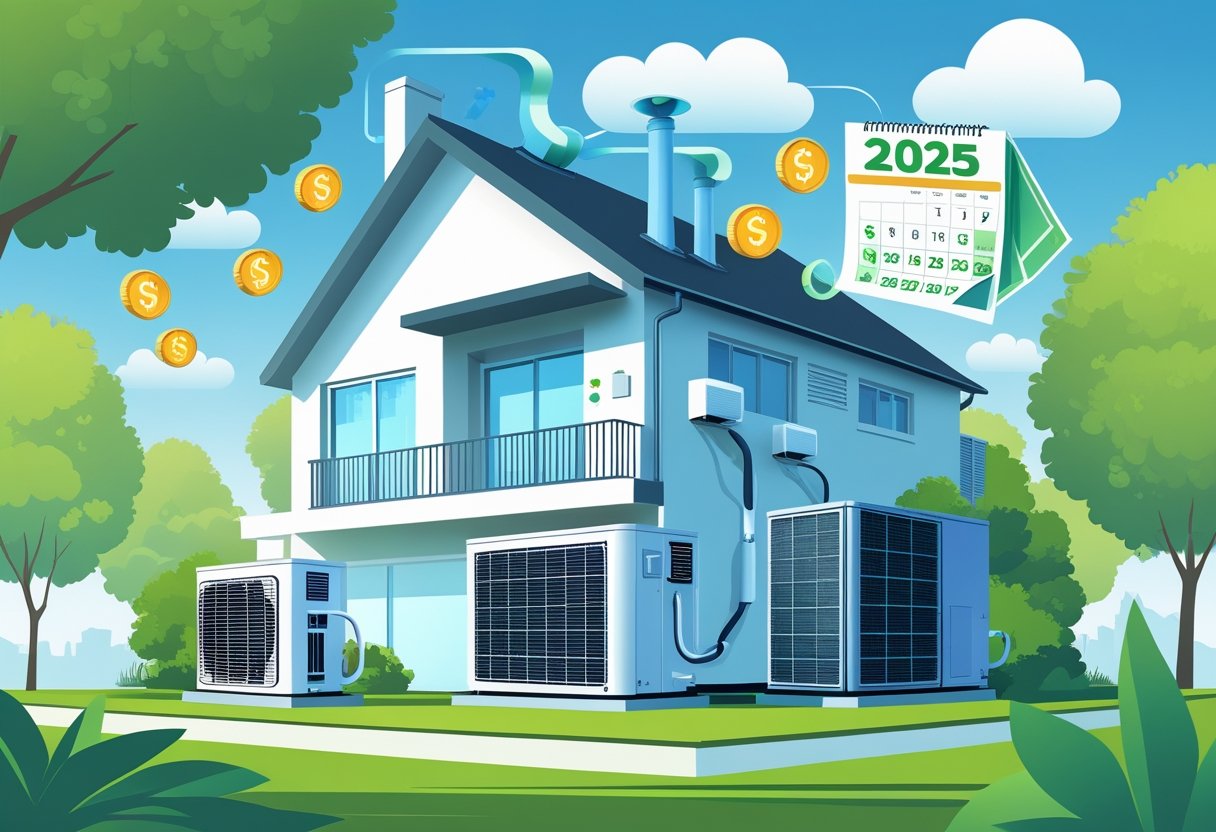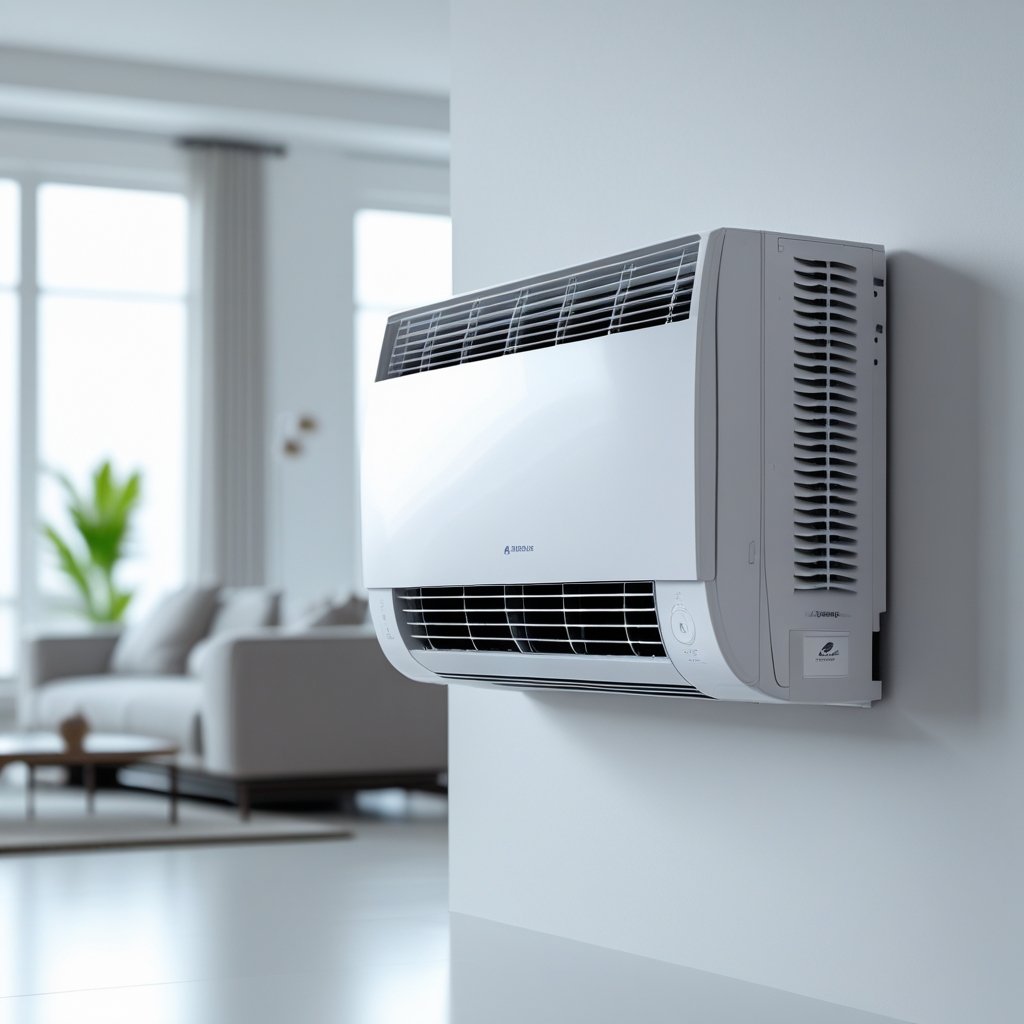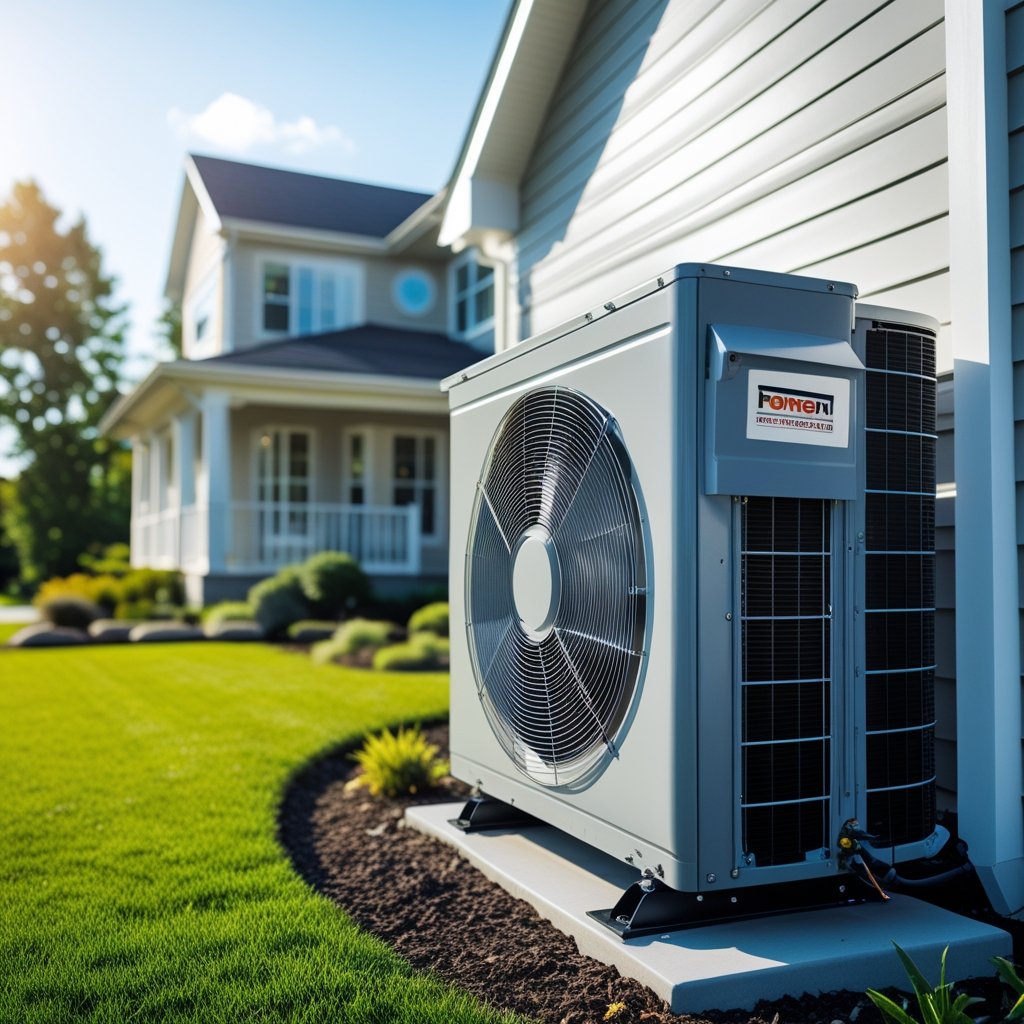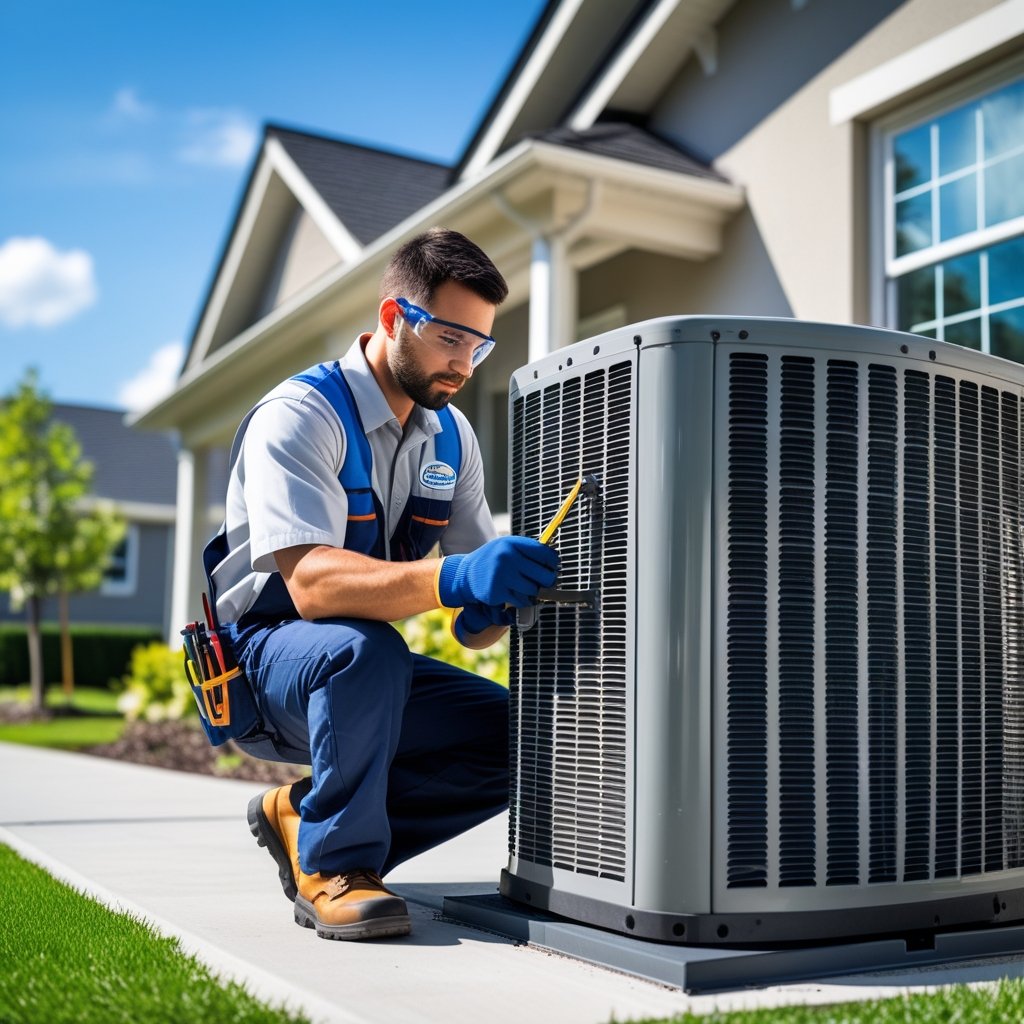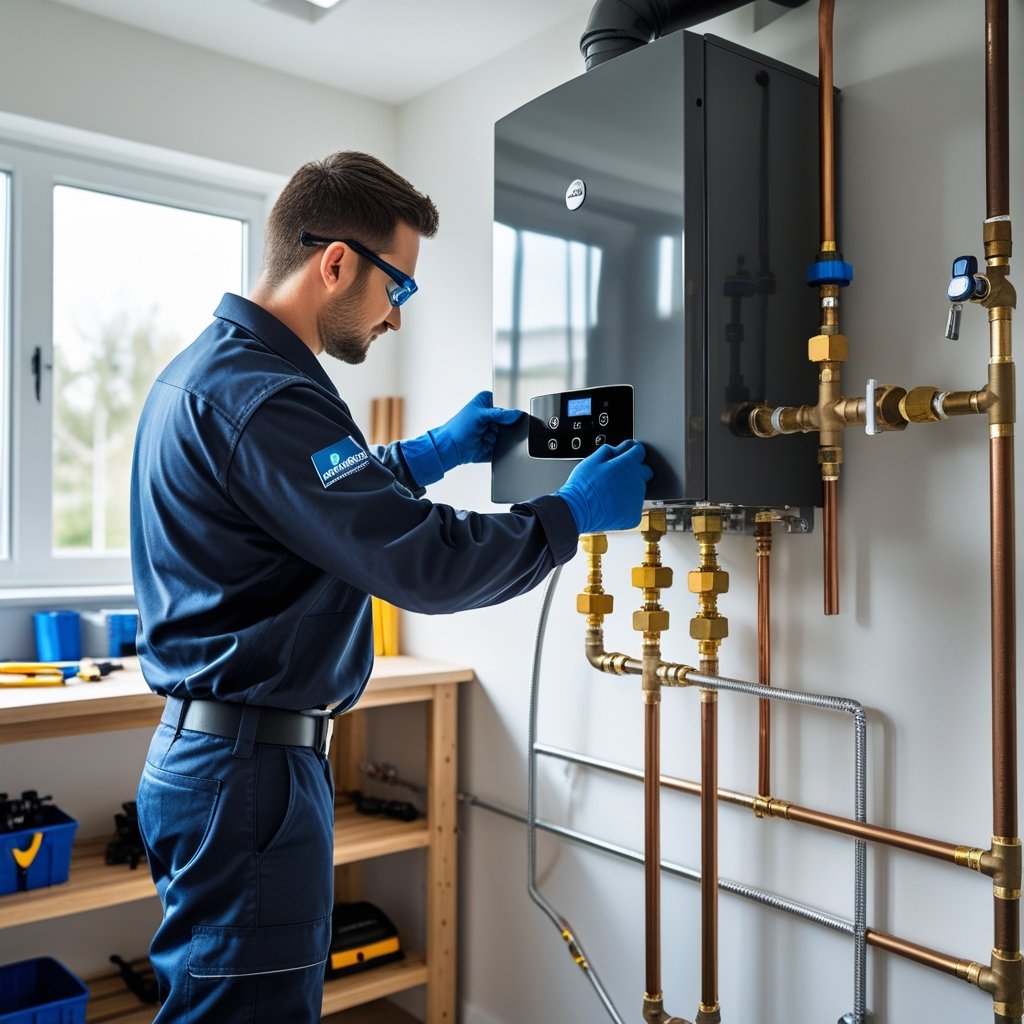Thinking about upgrading your HVAC system in 2025? Understanding rebates and tax credits could save you a good chunk of money. Homeowners can deduct up to $3,200 each year on federal taxes for energy-efficient HVAC improvements—so, honestly, it’s a smart time to invest. These savings can apply to parts of your installation costs, like heat pumps or mini-splits.
Leo Kob Co. has been serving South Central Pennsylvania since 1904, and we get how important it is to keep your home comfortable without breaking the bank. Taking advantage of rebates means you spend less upfront and enjoy lower energy bills down the road. Whether you’re in Lancaster, Harrisburg, or a nearby town, it’s worth knowing what financial perks are out there when you upgrade or maintain your HVAC system.
What Are HVAC Rebates And Tax Credits In 2025?
In 2025, HVAC rebates and tax credits make it easier—and cheaper—to upgrade or maintain your heating and cooling systems. These incentives reward you for installing energy-efficient equipment that can shrink your utility bills and lighten your home’s environmental footprint.
Key Differences Between Rebates and Tax Credits
Rebates are discounts or cash back you get after buying certain HVAC equipment. For example, you might get 30% back on heat pump installation costs, up to $2,000. Manufacturers, utility companies, or state programs usually offer these rebates.
Tax credits, on the other hand, cut down the income tax you owe. In 2025, you can claim up to $1,200 for other eligible HVAC improvements. You apply these credits when you file your taxes, and they lower your tax bill directly.
You can combine both rebates and tax credits to pay less upfront and save more over time. Just remember, tax credits mean you’ll need to keep good records for tax season.
Eligible HVAC Systems
Most 2025 incentives focus on energy-efficient heating and cooling options. Heat pumps are a popular pick—they use less energy than old-school systems. You might get a rebate for a new heat pump or for upgrades that boost efficiency.
Other systems that might qualify: mini-splits and high-efficiency furnaces. Your equipment usually needs to meet energy standards certified by ENERGY STAR or similar programs. Leo Kob Co. can help you pick qualifying equipment and handle the paperwork.
Knowing what’s eligible helps you choose the right upgrade and squeeze the most savings out of your next HVAC project.
How Incentives Help Homeowners
These incentives make efficient HVAC upgrades way more affordable. Rebates cut your initial expenses, so you pay less when your new system goes in. Tax credits reduce your taxes later, giving you some extra savings by lowering what you owe the government.
If you use both, you can make smart upgrades without paying full price. Investing in efficient equipment means your home uses less energy, which keeps those bills lower in the long run.
Leo Kob Co., serving South Central Pennsylvania, helps you track down and apply for these incentives. This support gives you peace of mind while making your home more comfortable and reliable.
Federal Tax Credits For HVAC Upgrades
You can save on your federal taxes when you upgrade your HVAC system. These tax credits depend on your system’s energy efficiency and the type of equipment you install. Figuring out how to qualify and claim these credits can cut the cost of important upgrades.
Overview of ENERGY STAR Qualifications
ENERGY STAR certification is a must for most federal HVAC tax credits. Your new heating or cooling system has to meet strict energy efficiency levels set by the government. Usually, that means using 15-30% less energy than standard models.
Look for ENERGY STAR labels on products like air conditioners, heat pumps, furnaces—even programmable thermostats. Swapping out old equipment for ENERGY STAR-certified systems can boost your home’s comfort and shrink your utility bills.
Before you buy, check for the ENERGY STAR logo so you know your system qualifies. Leo Kob Co. can help you find the right ENERGY STAR gear for homes in South Central Pennsylvania.
Available Federal Credits By System Type
Federal tax credits cover several HVAC upgrades. Here’s a quick look at what you might get:
System TypeCredit AmountDetailsAir Conditioners30% of cost, up to $600Must be ENERGY STAR certifiedHeat Pumps30% of cost, up to $600Includes mini-splitsFurnaces and Boilers30% of cost, up to $150High-efficiency models onlyProgrammable ThermostatsUp to $50ENERGY STAR required
These credits usually apply to both equipment and installation costs, but check the IRS rules for limits. You can claim credits on multiple upgrades in one year, as long as you stay within the allowed dollar amounts.
How to Claim Your Tax Credit
To claim your HVAC tax credit, you’ll need IRS Form 5695 when you file your taxes. Keep all receipts and product certifications as proof.
Here’s what you should do:
- Save your invoice with the product and installation date.
- Check the manufacturer’s certification statement for ENERGY STAR qualification.
- Fill out IRS Form 5695 to report your credits.
- Submit the form with your federal tax return.
Leo Kob Co. always provides the right paperwork for your tax credit claims when we install qualifying HVAC systems. Remember, these credits reduce your tax bill—they don’t send you a check. If you’re unsure about the rules, it’s never a bad idea to talk to a tax pro.
State And Local Rebates For HVAC In 2025
Plenty of states and local governments offer rebates and incentives to help you save on energy-efficient HVAC upgrades. These programs vary by location and often work alongside federal tax credits. Knowing where and how to apply for rebates can lower your upfront costs and keep your home comfortable.
Navigating State Rebate Programs
Each state has its own HVAC rebate programs to push for energy savings. These often cover things like high-efficiency heat pumps, air conditioners, or mini-split systems. You’ll usually need to buy equipment that meets certain energy standards.
To get started, check your state energy office website or your utility company’s resources. Most programs want you to apply after installation and provide proof like receipts or contractor certifications. In Pennsylvania, for instance, some rebates cover up to several hundred bucks for upgrading to qualified heat pumps.
Knowing the rules and deadlines helps you avoid missing out. Leo Kob Co. can guide you through equipment choices that qualify for your state’s incentives.
How To Find Local Incentives
Local utilities and municipalities sometimes offer their own rebates on top of state programs. These are meant to lower your energy bills by helping you install efficient HVAC systems in your area.
Start by visiting your utility provider’s website or giving their customer service a call. Ask about rebates for things like mini-split installation or furnace replacements. Some areas run limited-time campaigns or have annual budgets for these incentives.
You might also spot community programs aimed at low-income households or special improvements like combi-boilers. Keeping an eye on local announcements—or working with trusted contractors like Leo Kob Co.—means you’ll hear about new rebates as soon as they pop up.
Stacking Local and Federal Savings
You can often combine state, local, and federal rebates and tax credits for even bigger savings. Federal programs in 2025 support energy-efficient HVAC improvements through tax credits that lower your tax bill.
When you plan your HVAC upgrade, check if your local and state rebates can be used with federal incentives. Usually, you apply for local rebates first to cut your initial cost, then claim federal credits at tax time.
Keep all your paperwork—like invoices and product specs—from your HVAC contractor. This helps make sure you qualify at every level. If you stack it all right, you’ll get the most value from your investment and keep your home’s heating and cooling running efficiently for years.
Utility Company HVAC Offers
Utility companies often pitch in with rebates and incentives to help lower the cost of energy-efficient HVAC systems. These offers can include discounts on equipment, installation, or energy-saving upgrades. Knowing how to apply, what’s available, and when to act will help you cash in.
Types of Utility Rebates
Utility rebates usually cover a range of HVAC equipment. Common offers include:
- Heat pumps
- Mini-split systems
- High-efficiency furnaces and air conditioners
- Energy-efficient boilers and combi-boilers
You might also find rebates for upgrades like smart thermostats or air sealing to boost efficiency. Often, these stack with federal tax credits, letting you save even more.
The rebate amount depends on the program and equipment. For instance, installing a heat pump could net you several hundred dollars back from your utility.
How To Apply Through Your Utility
To apply for rebates, start by checking your local utility’s website or calling their customer service. You’ll usually need to:
- Buy qualified equipment
- Have installation done by a licensed tech (like us at Leo Kob Co.)
- Submit a rebate application, often with proof of purchase and installation
Some utilities offer instant rebates through approved contractors who handle the paperwork for you. If not, you fill out a form and send in receipts within a set time.
Hang on to all documents and check your application status so you don’t miss out.
Deadlines and Eligibility
Rebate programs run on set timelines—usually tied to the fiscal year or when funding runs out. Be sure to:
- Apply soon after installation
- Make sure your equipment meets program standards
- Confirm your property’s location qualifies (some rebates are region-specific)
You usually need to own the property, and installations must meet energy efficiency ratings set by the utility or government. Sometimes, programs don’t cover rentals or new builds.
Missed deadlines or missing paperwork can disqualify you. Planning ahead helps you avoid that headache.
Qualifying For 2025 HVAC Incentives
To qualify for HVAC rebates and tax credits in 2025, you’ll need to know some key rules about income, whether you own or rent, and what documents to submit. Meeting these requirements makes sure you get the right benefits without extra hassle.
Income Requirements
Your income can affect eligibility for many HVAC incentives in 2025. Some rebates target households with a gross annual income below certain limits.
For example, if your household brings in less than $100,000, you might qualify for bigger rebates or credits. Higher incomes might still get smaller credits, depending on the program.
States and local utilities usually set specific income ranges for rebates. Check your eligibility by comparing your gross income with their guidelines.
Leo Kob Co. can help you figure out which income rules apply to your area and situation.
Homeowner vs. Renter Eligibility
Homeowners have an easier time getting HVAC rebates and tax credits. Most programs want proof of ownership since upgrades stick with the property.
Renters don’t usually qualify for rebates on HVAC equipment unless their landlord agrees to make the changes and apply for incentives.
Some cities and states offer limited funds to renters if energy-efficient systems are installed in their units, but those are rare and usually need extra documentation.
If you rent, chat with your landlord about available programs. Leo Kob Co. often works with landlords to help tenants benefit from energy savings.
Documentation Needed
You’ll need clear documents when applying for 2025 HVAC incentives. This proves eligibility and keeps things moving.
Typical documents:
- Proof of income (tax returns or pay stubs)
- Proof of home ownership (deed or mortgage statement)
- Receipts and invoices for the HVAC equipment and installation
- Manufacturer certification for the installed system
Keep these documents organized and send them in quickly. Some programs also want energy audits or efficiency test reports.
Your installer or contractor, like Leo Kob Co., can help you gather and submit the right paperwork.
2025 HVAC Rebates And Credits For Businesses
If you own a commercial property, you’ll find several rebates and tax credits to help cut your HVAC upgrade costs in 2025. These incentives focus on meeting specific building and system standards to encourage energy efficiency and save you money.
Commercial Property Qualifications
To qualify for HVAC rebates and credits, your commercial property usually has to follow certain rules. Typically, buildings need to be in eligible areas and used for business. Your HVAC system must be new or significantly upgraded to qualify.
Some programs want proof that your system meets efficiency standards and that you installed equipment within a certain timeframe. Keeping detailed receipts and documentation makes the process much easier.
At Leo Kob Co., we can help make sure your commercial HVAC project checks all the right boxes. That way, you can claim rebates or tax credits without a ton of hassle.
Energy Efficiency Standards For Businesses
Most 2025 rebates zero in on HVAC systems with strong energy efficiency. To qualify, your equipment usually needs ENERGY STAR certification or to meet ASHRAE 90.1 standards.
If you upgrade to units with variable speed drives, higher SEER ratings, or advanced controls, you can boost your rebate chances. These systems cut down on energy use but still keep your business comfortable.
Choosing energy-efficient HVAC options means you get financial incentives and lower utility bills. Over time, those savings really start to add up. Leo Kob Co. can help you pick out qualifying systems. They focus on quality service at a fair price, so your investments go further and you get the rewards you’re after.
How To Apply For HVAC Rebates And Tax Credits
Applying for HVAC rebates and tax credits takes some careful preparation and a bit of organization. You’ll need paperwork, proof of purchase, and a good understanding of the process. Staying on top of the details helps you get your savings without unnecessary delays.
Step-by-Step Application Guide
Start by collecting all your receipts and invoices from the HVAC work. Double-check that your system meets the rebate or tax credit’s efficiency requirements.
Next, look up the eligibility rules on your utility company or government’s website. You’ll probably have to fill out a form—sometimes online, sometimes by mail. Attach copies of things like contractor licenses, product certifications, and paid invoices.
Send in your application before the deadline, and keep copies of everything. Some local programs, including those Leo Kob Co. supports, might even help with the paperwork to make things easier.
Common Mistakes To Avoid
Missing the deadline is a big one—mark it on your calendar. Incomplete paperwork or missing documentation is another common snag; without proof of purchase or certification, your application might get tossed out.
Don’t just assume your contractor will handle all the paperwork. Check and confirm who’s responsible. And make sure your HVAC system actually qualifies—some programs require certain brands, efficiency levels, or licensed professionals for installation.
Paying attention to these details saves you time and helps you hang onto those valuable savings.
Maximizing Savings On Your 2025 HVAC Upgrade
Making smart moves with your HVAC upgrade can save you money up front and keep your energy bills lower down the road. Timing your replacement right and mixing rebates with good financing really makes a difference.
Timing Your Upgrade For Best Value
If you upgrade your HVAC system during certain months, you might snag higher rebates and tax credits. Lots of rebates pop up at the beginning or end of the year, so buying in late winter or early spring could pay off before summer demand jumps.
Federal tax credits for energy-efficient equipment tend to shift from year to year, so check the latest IRS rules before you buy. Local utilities in South Central Pennsylvania sometimes run seasonal promos, too. Leo Kob Co. keeps tabs on these offers and can help you plan around them.
If you act before older rebates expire or new ones kick in, you might be able to stack multiple incentives. That means lower upfront costs and a quicker return on your energy savings.
Combining Rebates With Financing Options
A lot of homeowners find it easier to combine rebates and credits with financing plans to spread out the cost. Low-interest loans or special payment plans let you upgrade your HVAC without a huge initial payment.
Some utilities or manufacturers even offer financing that applies rebates right to your loan balance, cutting your monthly payments and keeping budgeting simple. Ask your HVAC contractor—like Leo Kob Co.—about financing options that can work with rebates for maximum savings.
Smart financing keeps your monthly costs manageable while you enjoy better equipment. Just remember to read the loan terms carefully—nobody likes hidden fees or high interest rates. When you combine rebates and good financing, you balance comfort, cost, and long-term savings.
Future Trends In HVAC Incentives
Looking at 2025, HVAC incentives are moving more toward energy efficiency and low-carbon systems. Expect to see extra rebates for heat pumps, mini-splits, and equipment that shrinks your home’s carbon footprint.
Tax credits might expand to cover more than just new installs—maintenance and repairs could be included, so keeping your current system efficient might save you money, too.
States and local areas like South Central Pennsylvania are pushing for cleaner energy, so you’ll probably see more local rebates and perks for sustainability. Leo Kob Co. keeps an eye out for these offers, so you don’t miss anything.
You might see:
- More rewards for smart, connected HVAC controls
- Bigger rebates for energy assessments and building improvements
- Extra incentives if you pair HVAC with renewable energy systems
Chances are, incentives will get easier to claim, with less paperwork and faster approvals. That means less hassle when you’re trying to get your savings.
Leo Kob Co. stays on top of all the current and upcoming rebates. If you’re planning new equipment or upgrades, it’s worth checking in to make sure you’re not leaving money on the table.
Frequently Asked Questions
You can save money on energy costs by using rebates and tax credits for certain HVAC and home energy improvements. Here are answers to some common questions about what systems qualify, how to tally up your savings, and what’s new for 2025.
What types of HVAC systems are eligible for the federal tax credit in 2025?
Heat pumps, central air conditioners, and gas, propane, or oil furnaces that hit specific efficiency standards can qualify. Mini-split systems installed in your home might also be eligible. Just make sure the product meets the IRS and Energy Star criteria.
How can I calculate my potential HVAC rebates and tax credits for this year?
Check the tax credit percentages and rebate amounts for each type of appliance. Add up the eligible costs—equipment and installation—and multiply by the credit rate. Online calculators or advice from a contractor like Leo Kob Co. can help you estimate your savings.
Are Energy STAR certified appliances still qualifying for energy tax credits in 2025?
Yep, plenty of Energy STAR certified HVAC systems are still eligible. The catch is, the certification has to meet the latest efficiency standards. Always double-check the current Energy STAR guidelines for the exact models.
Can I receive a tax credit for installing energy-efficient windows or insulation in my home this year?
Yes. If you install new energy-efficient windows or insulation that meets government standards, you can usually get a tax credit. These upgrades help your home use less energy and can cut your heating and cooling bills.
What information do I need to file IRS Form 5695 for energy-efficient home improvements?
You’ll need receipts with purchase dates, equipment details, and costs. Keep proof that the product meets efficiency standards, too. Detailed records from your contractor—like Leo Kob Co.—can make filing a lot easier.
What new home energy efficiency improvements have been added to the tax credit list for 2025?
For 2025, there are some fresh additions—advanced heat pump water heaters, for one, and electric panel upgrades if you’re pairing them with energy storage. Renewable energy systems like solar panels made the cut again. And hey, even certain smart thermostats and battery storage setups now qualify, which feels overdue, honestly.

